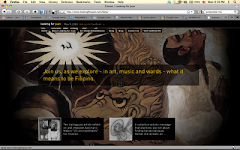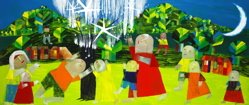Civil servants by profession without independent financial means, Dorothy and Herbert Vogel have acquired some 4,000 objects, primarily drawings, since their marriage in 1962. Today these works constitute one of the most remarkable collections of contemporary art in America.
Their intention, as they began, was not to build “a collection” but rather to find works that they wanted to live with. Among the earliest acquisitions was a wall piece by Giuseppi Napoli—one of the few Herb made before he married Dorothy. They celebrated their engagement by selecting one of Pablo Picasso’s ceramic vases together, and their initial purchase as a married couple was a sculpture by John Chamberlain. Eventually focusing on drawings, the Vogels nonetheless acquired works in other media reflective of the range of “their” artists’ practices. Martin Johnson, for example, is represented in the collection by drawings, paintings, sculptures, and works on paper that incorporate collage and photography.
Their initial purchase as a married couple was a sculpture by John Chamberlain
The art community’s awareness of the limited funds the Vogels could devote to their acquisitions brought them considerable admiration, as did their enthusiastic response to a range of contemporary practices, which included work others found difficult to appreciate.
Frequently referred to as collectors of minimal and conceptual art, the Vogels have always had a more expansive reach: art rooted in abstract expressionism (Michael Goldberg and Charles Clough), innovative post-minimalist approaches (Richard Francisco and Pat Steir), and diverse figurative directions (Will Barnet and Mark Kostabi).
The Vogels provided moral and modest financial support to relatively unknown artists who would later receive international acclaim. Among them are Robert Barry, Sol LeWitt, Edda Renouf, and Richard Tuttle—all of whom became close friends with the Vogels. By the 1970s, when their collection became widely exhibited and recognized by the international art press, Dorothy and Herbert Vogel likewise were acknowledged for their early, prescient attention to these artists.
HERB & DOROTHY Trailer from Herb & Dorothy on Vimeo.
To learn more, visit http://vogel5050.org/.





No comments:
Post a Comment